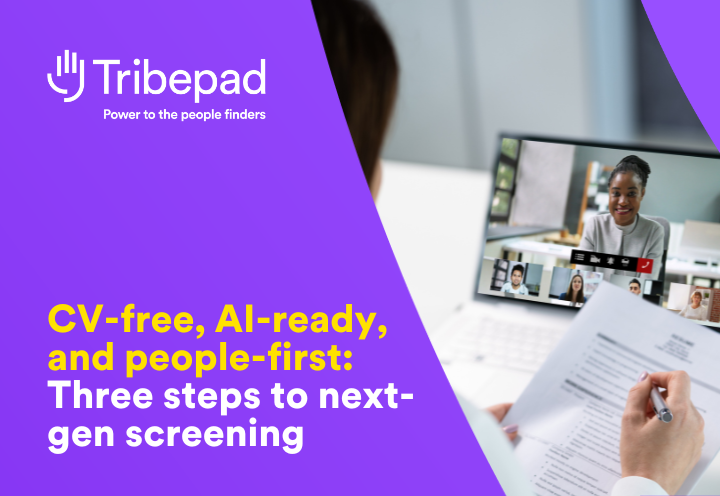Nearly half of HR professionals expect at least 20% of their workforce to be contractors, freelancers, or temps by 2022, PwC say.
Heaps of other studies concur. 41% of respondents to Deloitte’s Global Human Capital Trends 2019 report say capitalising on this alternative workforce is a critical strategic priority, for example.
(Telling, then, that only 8% say they have best-in-class processes to recruit, manage, and develop their flexible talent assets. Something we’ll explore a little later…)
Whatever the exact breakdown of contractors versus employees, the trend is clear: flexible workers are becoming an increasing proportion of today’s workforce.
So… now’s a great time to deep dive into exactly what that means. In this short guide, we’ll cover:
- The key differences between contractors and employees
- The legal implications of hiring contractors
- The advantages and disadvantages of contractors and employees
- The differences in recruiting contractors versus employees
- The huge opportunity for more strategic contractor recruitment
Let’s go.
What are contractors and freelancers?
Both contractors and freelancers are self-employed, responsible for their own tax and benefits. As a self-employed worker, they’re in full control of running their business (even if that’s a business of one). The buck stops with them.
Contractors and freelancers:
- Set their own hours
- Choose their clients or projects
- Decide where to work
- Determine their own rates of pay
- Send invoices
- Hire sub-contractors if desired
- Source their own equipment
- Pay their own tax
- Hold their own liabilities
- Have their own insurance
The two terms ‘contractor’ and ‘freelancer’ are often used interchangeably but there’s some nuance.
The difference between freelancers and contractors is, freelancers tend to juggle multiple clients and projects simultaneously while contractors tend to work on one large project at once, usually for a single client and often on-site.
For example:
- A freelance web developer might work with you for several months on a new web build but not full-time and rarely on-site.
- An IT contractor might come on-site for a month and work full-time with your permanent team, to set-up your new architecture and train users.

What is an employee?
In contrast to the above, an employee is someone working within a pre-agreed contract in your employment. That is, the buck stops with you from a tax, benefits, liabilities, role and responsibilities, work provision, and rate-setting perspective.
What are the legal implications of hiring contractors?
The legal definition of workers has an implication on who pays tax and more importantly, how much tax hits the government coffers – so it gets a fair amount of scrutiny!
IR35 – the “off-payroll worker rule”
This was originally introduced in 2000 to close a loophole that saw people who worked full-time for one employer – AKA, employees – calling themselves contractors to avoid paying the higher rate of tax that full-time employees incur.
As this rule originally stood, the responsibility for ensuring correct tax liability – and the penalties for making mistakes – sat with the worker, not the employer.
This changed in April 2021 because IR35 wasn’t working. In 2011/2012 only 10% of the people who should’ve paid tax under IR35 did so, for example. HMRC estimates that unchecked non-compliance with IR35 would cost the Exchequer £1.3Bn by 2023/24.
As the rule now stands, the responsibility for ensuring correct tax liability now sits with the employer. ‘Disguised employees’ will be taxed like employees – and the burden for paying falls to the employer.
If you’re retrospectively found to have gotten this wrong, you’ll have to pay all back taxes and NI contributions due plus accumulated interest, plus additional penalties of up to 200%.
In other words, you need to be certain your classification of workers is legally correct.
What are the benefits of contractors versus employees?
Given the possible legal ramifications above, is working with contractors and freelancers worth it? Or is hiring flexible talent an undesirable inevitability; a gap-filler to cover absence or while you find someone permanent?
Many organisations treat contractors and freelancers as the latter, but that’s missing an opportunity. Especially in today’s competitive environment, where agility is so business-critical.
Benefits of contractors and freelancers:
- Boost business agility and decrease risk
- Release budget to invest where it counts
- Counteract insularity with outside perspectives
- Widen your talent pool and combat skills shortages
- Improve delivery by boosting in-house skills
- Protect employee wellbeing and decrease absenteeism
On the other hand, there are also some disadvantages of working with contractors and freelancers.
Disadvantages of contractors and freelancers:
- Less control over the working arrangement
- Availability isn’t guaranteed
- Potential competitive conflicts
- Increased uncertainty with short, if any, notice periods
- Less alignment with your culture and values
- Less consistency for customers or clients
- Process or interpersonal friction with permanent team
Those advantages and disadvantages are reversed with employees. Employees are typically more loyal, more aligned to your culture, and totally under your control as a resource. You determine what they work on, where they work, how they work, and which skills they develop.
Ultimately, the future workforce will contain both contractors and employees – with flexible talent recognised as an instrumental, not undesirable, part of talent mix.
Recruiting contractors versus employees
Permanent recruitment has transformed over the past decade. Recognising the strategic importance – and increasing difficulty – of hiring the right people, organisations have invested extensive time and resource in evolving their recruitment.
Your recruitment for employees probably looks something like this:
- Modern recruitment technology
- Structured, consistent processes
- Consistent rates and hiring criteria
- Fast, modern, positive candidate experience
- Time and resource invested in employer branding
- Robust visibility and reporting
- Compliant chain of data
- Considered decision-making
- Cost-effective; scalable
- Most hires sourced by recruitment team
Compare that to how you probably recruit contractors and freelancers:
- Reliance on spreadsheets, emails, WhatsApp
- Unstructured and inconsistent processes
- Wild variance in rates and terms
- Maverick hiring managers hiring favourites
- Patchy contractor candidate experience
- No consideration of contractor employer brand
- Little, or often no, visibility or reporting
- High risk of non-compliance
- Short-term reactive decision-making
- Expensive; not sustainable at scale
- Heavy reliance on agencies
As organisations increase their reliance on flexible workers, these clumsy, slow, outdated recruitment processes stall progress.
And even if you have some degree of consistency via your procurement department, this set-up resolves few of the issues above.
The problem with procurement:
A defined purchasing process might mean you secure confirmation before work goes ahead but confirmation doesn’t equate to control. You’ve still likely got hiring managers from across the business sourcing their own contractors, negotiating their own terms, engaging with agencies, and so on.
And these purchasing processes are typically so slow and bureaucratic they’re disliked by everyone, serving only to slow projects and hurt the contractor experience.
Plus, this set-up introduces an artificial division between your permanent employees and workers – who are all your people. This division muddies visibility, which has a knock-on implication for HR and workforce planning. Ownership for end-to-end contractor management should sit with your people team, so you can better leverage your workforce.
That demands a new process – backed by a new type of inexpensive, easy-to-use technology called contractor management software.
Contractor management software
Contractor management software is like the talent acquisition suite you use for your permanent recruitment, but for flexible workers. It creates a central hub where you can build talent pools, create jobs, invite applications, effortlessly manage compliance, deliver onboarding workflows, track progress, sign-off timesheets, and review performance.
It increases visibility and consistency into how you work with contractors – so you can leverage your talent more effectively, however they work with you.
Benefits of contractor management software:
- Slash your agency spend
- Ensure hassle-free compliance
- Fill openings much, much faster
- Empower hiring managers
- Improve contractor loyalty
- Gain visibility with better reporting
Aaaaand…. there you have it – everything you wanted to know about contractors versus employees and what they’ll mean for your future talent mix. Let us know if there’s anything we missed, or we’d love you to share your insights from your own journey.



